HTML
--> --> -->On the other hand, several atmospheric environmental control projects have been implemented in succession by the Chinese government to strictly control atmospheric pollution since 2013. According to the "Report on the State of the Environment in China", the average PM2.5 mass burden of 74 leading cities (Fang et al., 2016) in China has dropped from 72 μg m?3 in 2013 to 39 μg m?3 in 2018. Specifically, the PM2.5 mass concentration decreased by 43.4% and 34.4% in two key regions: Beijing-Tianjin-Hebei and the Yangtze River Delta, respectively. These results indicate that the treatment of air pollution has resulted in significant reductions, and the transboundary impact of Chinese pollutant emissions on the air quality of neighboring countries should also show concurrent reductions over the past 10 years. However, it is rare to see related research which estimates the interannual variations of pollutants based on emission sources that exhibit annual changes.
The emission source inventories covering East Asia corresponding to the simulation year were established. First, the MIX inventory (Li et al., 2017), which provides the major anthropogenic emission data covering the entire Asian continent, is regarded to be a reliable emission inventory and has been widely used by modeling studies. Thus, the MIX (based on 2010 data) combined with other emission data, including lightning, spraying, soil fertilization, global natural VOCs, forest and grassland wildfires, and straw burning from REAS (Regional Emission Inventory in Asia; Version 2.1), MEGAN (Model of Emissions of Gases and Aerosols from Nature; Version 2.1), and GFED (Global Fire Emissions Database; Version 3.0), respectively, was applied to establish the emission inventory in 2010. Second, the latest version of MEIC inventory (
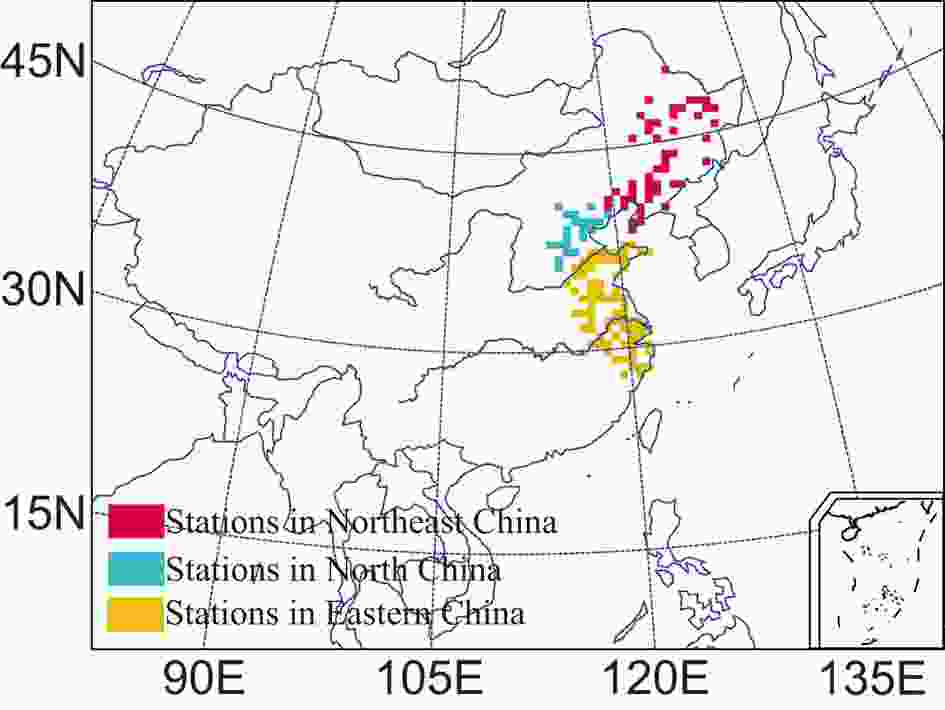 Figure1. The model domain used in this study and the locations of observation data in North China, Northeast China, and Eastern China.
Figure1. The model domain used in this study and the locations of observation data in North China, Northeast China, and Eastern China.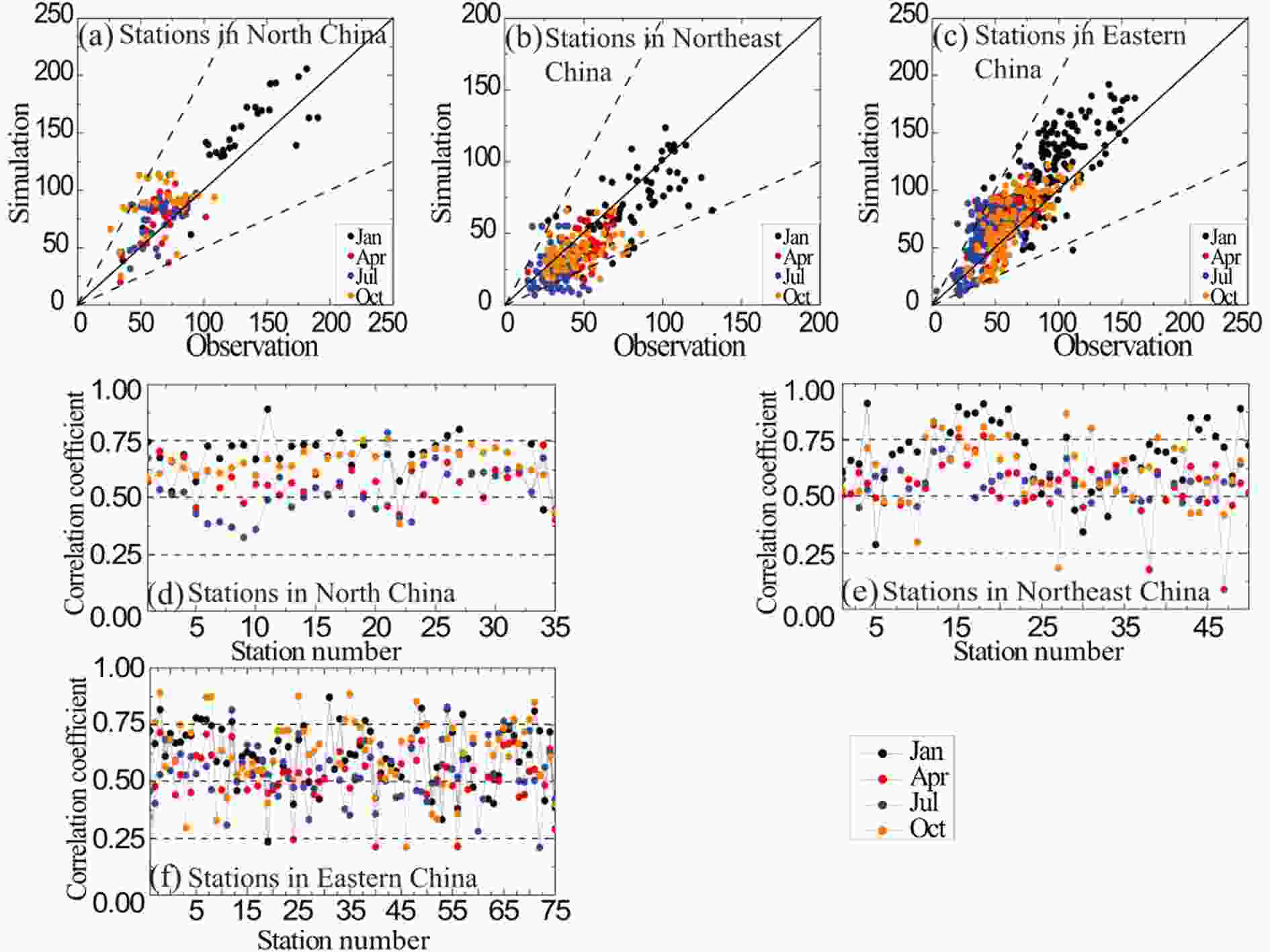 Figure2. Scatterplots of the modeled and observed monthly means (units: μg m?3) of PM2.5 mass concentrations (a–c) and the correlation coefficients (d–f). The solid lines are 1:1 and the dashed lines are 2:1 or 1:2 in (a–c). The x-axis represents the different stations in (d–f).
Figure2. Scatterplots of the modeled and observed monthly means (units: μg m?3) of PM2.5 mass concentrations (a–c) and the correlation coefficients (d–f). The solid lines are 1:1 and the dashed lines are 2:1 or 1:2 in (a–c). The x-axis represents the different stations in (d–f).Based on the emission inventories in 2010, 2015, and 2017, the mass concentration of pollutants in East Asia was simulated by RAMS-CMAQ. It should be noted that in order to eliminate the interannual variations of meteorological factors, all experiments were conducted by applying the same meteorological field corresponding to the mean values observed during the respective months of 2015. Figure 3 presents the monthly average surface wind field in January, April, July, and October of 2015. It can be seen that the meteorological conditions were conducive to pollutant transport from East China to South Korea due to the strong northwesterly wind field forced by the interaction between the Siberian (Continental) High and Okhotsk (Maritime) Low that are climatologically common in January. In July, however, the dominant wind direction was southerly, the wind speed was relatively low, and the strong solar radiation is known to lead to strong and widespread convection and a subsequent increase of dry deposition of aerosols. Thus, the transport impact from China should be weak during summer. On the other hand, compared with the weak average wind speeds in April, the anticyclonic circulations which develop in autumn imply that much of the pollution emitted from central and eastern China could be transported to the eastern, downwind areas in October. Figure 4 shows the horizontal distribution of the annual average PM2.5 mass concentration in 2015. The interannual differences of PM2.5 mass concentrations calculated from 2010, 2015, and 2017 data (2015 minus 2010, and 2017 minus 2015) are also shown in Fig. 4. First, it can be seen that high values, which can exceed 75 μg m–3, were mainly concentrated in North China, Central China, and the Sichuan Basin. Furthermore, the mass burden reached 35–75 μg m–3 in the densely populated areas of central and eastern China, and below 35 μg m–3 in other regions. The above distribution features were essentially consistent with that of the emission inventory. Also, the PM2.5 mass concentration broadly decreased by 15–30 μg m–3 from 2010 to 2015, and 10–20 μg m–3 from 2015 to 2017 in Central and Eastern China, respectively.
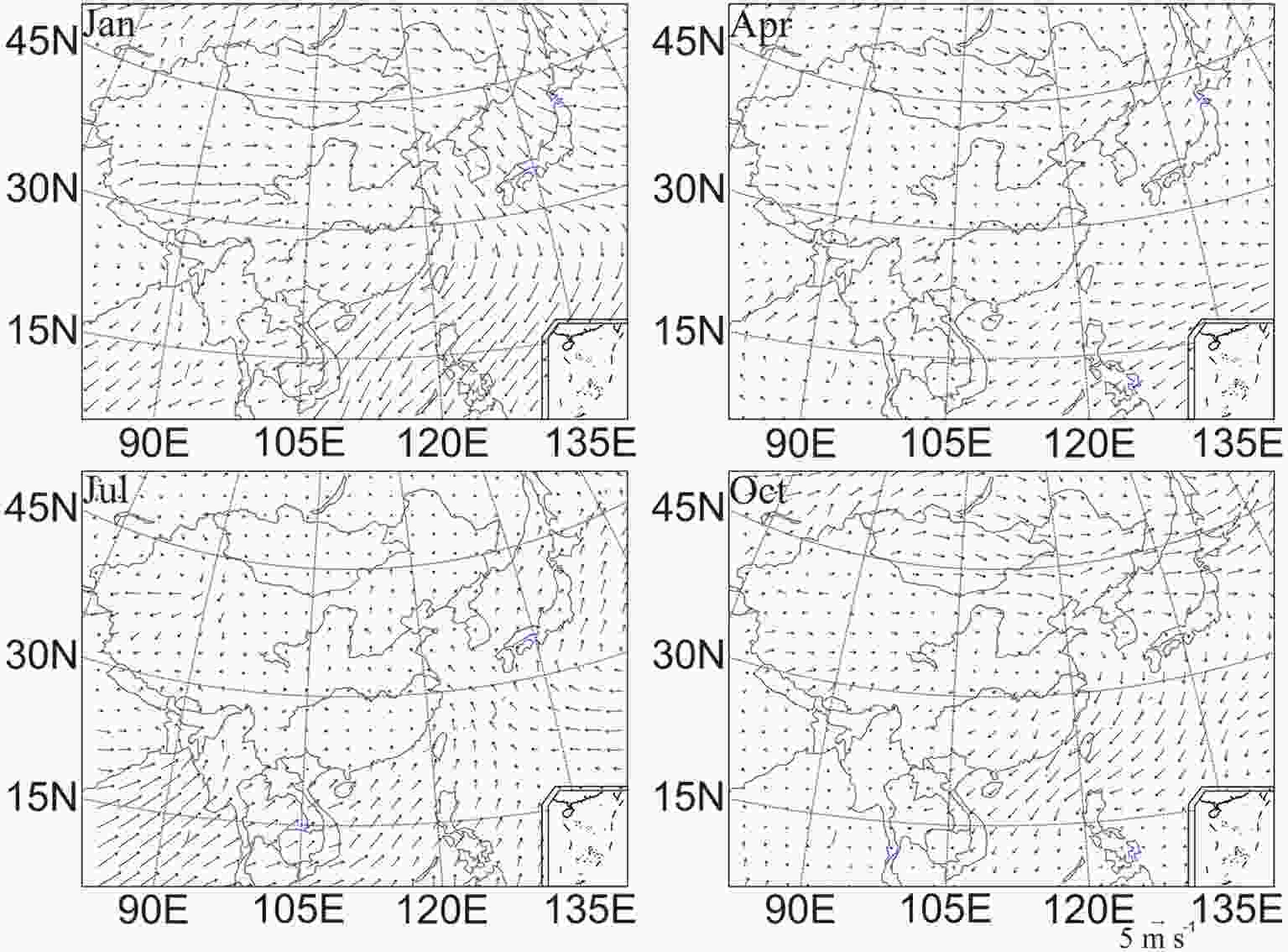 Figure3. The monthly averaged surface wind field in January, April, July, and October of 2015.
Figure3. The monthly averaged surface wind field in January, April, July, and October of 2015.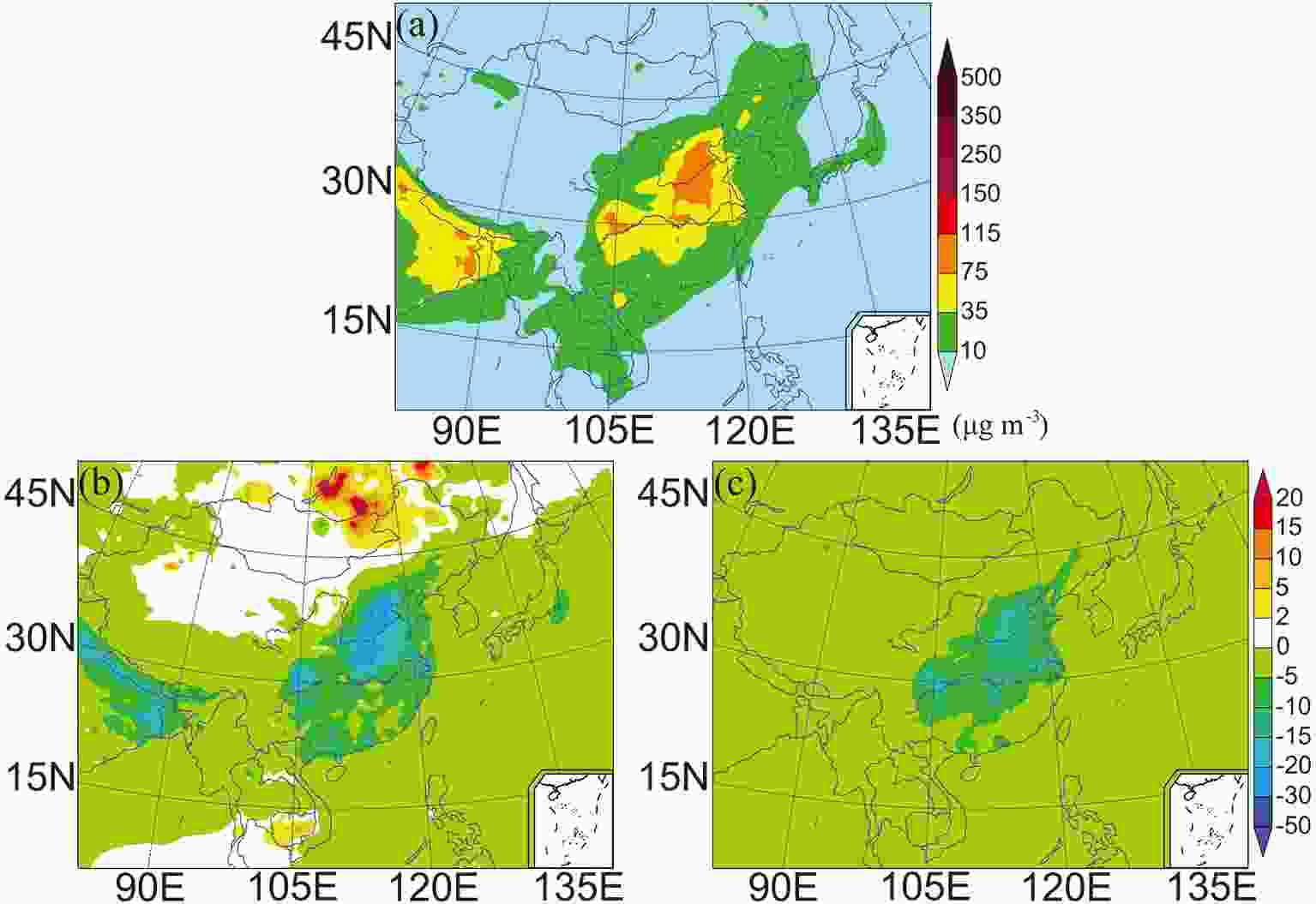 Figure4. The annual mean values of PM2.5 mass concentration in 2015 are shown in (a). Also shown are the variations of PM2.5 mass concentration: 2015 minus 2010 (b) and 2017 minus 2015 (c).
Figure4. The annual mean values of PM2.5 mass concentration in 2015 are shown in (a). Also shown are the variations of PM2.5 mass concentration: 2015 minus 2010 (b) and 2017 minus 2015 (c).Figure 5 shows the percentage of the average annual contribution which was attributed to anthropogenic emissions by China, to the total PM2.5 mass burden in 2010, 2015, and 2017 over the model domain. Generally, it can be seen that the major anthropogenic contributions appeared in localized areas of China. The value could exceed 90% over most of these regions, except the Xinjiang Uygur Autonomous Region and the Tibet Autonomous Region in China, and was limited to 20%–30% of the total PM2.5 mass burden in South Korea in 2010. Over time, the local contribution trended lower in the Xinjiang Uygur Autonomous Region, Central China, and Northeast China consistent with the accompanying decrease of anthropogenic emissions, but generally maintained a value above 70% in most regions. Also, the contribution of Chinese anthropogenic emissions of PM2.5 in South Korea dropped to less than 30% in 2015 and less than 20% in 2017. According to the simulation results, the annual, regionally averaged contribution was 28.0% in 2010, 20.4% in 2015, and 15.7% in 2017, respectively.
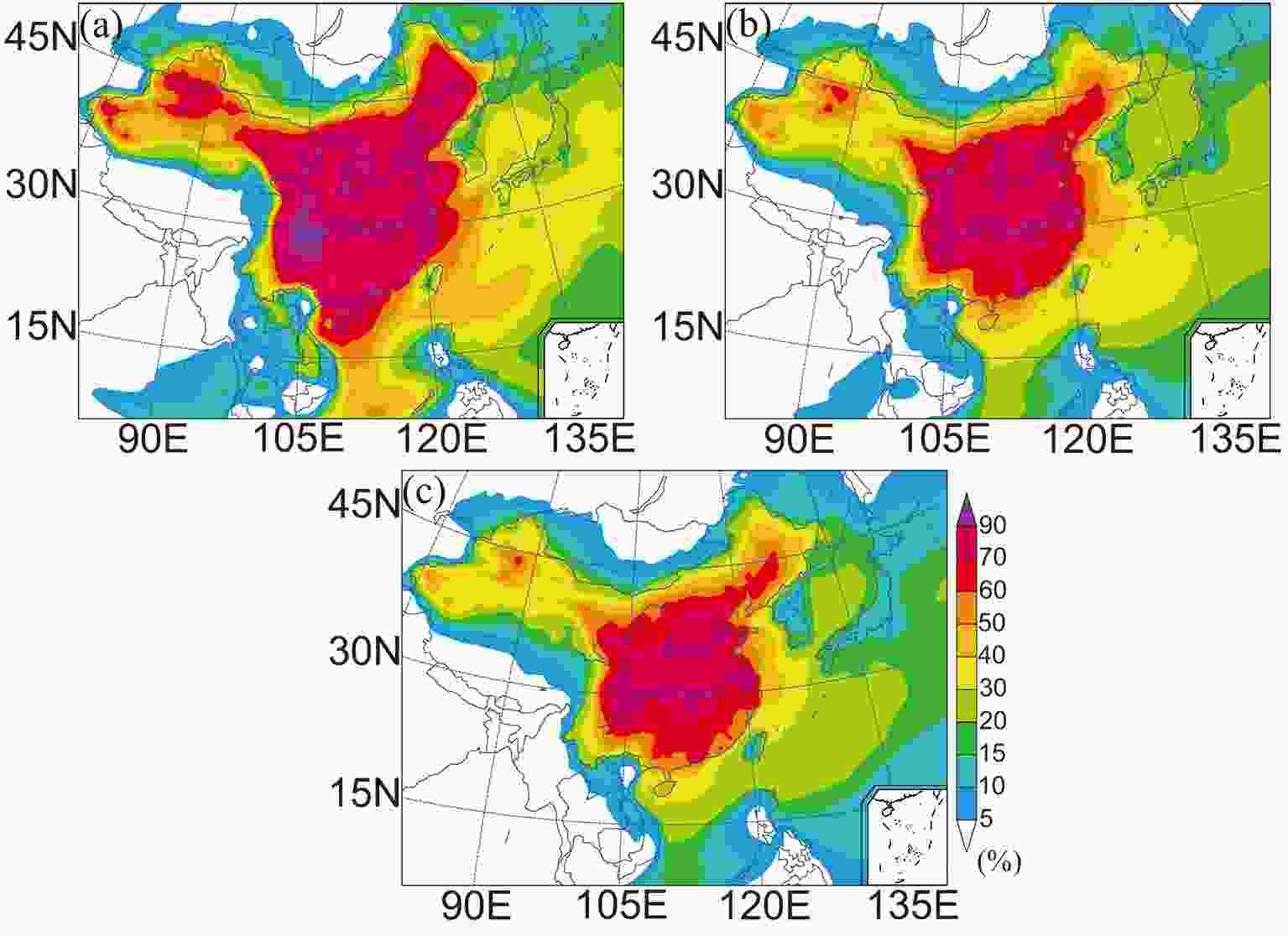 Figure5. Annual mean values of contribution (%) of PM2.5 from the emission sources in China in 2010 (a), 2015 (b), and 2017 (c).
Figure5. Annual mean values of contribution (%) of PM2.5 from the emission sources in China in 2010 (a), 2015 (b), and 2017 (c).In general, the mass burden of PM2.5 particles in China has decreased significantly, and the contribution from local anthropogenic emissions has also been declining due to the strict emission control measures. The transport contribution of Chinese anthropogenic emission to the PM2.5 mass burden in South Korea has also dropped significantly from 28.0% in 2010 to 15.7% in 2017. As reported by related research (
Acknowledgements. This work is supported by the National Natural Science Foundation of China (Grant Nos. 41830109 and 42077203), and the Strategic Priority Research Program of the Chinese Academy of Sciences (Grant No. XDA19040204).
